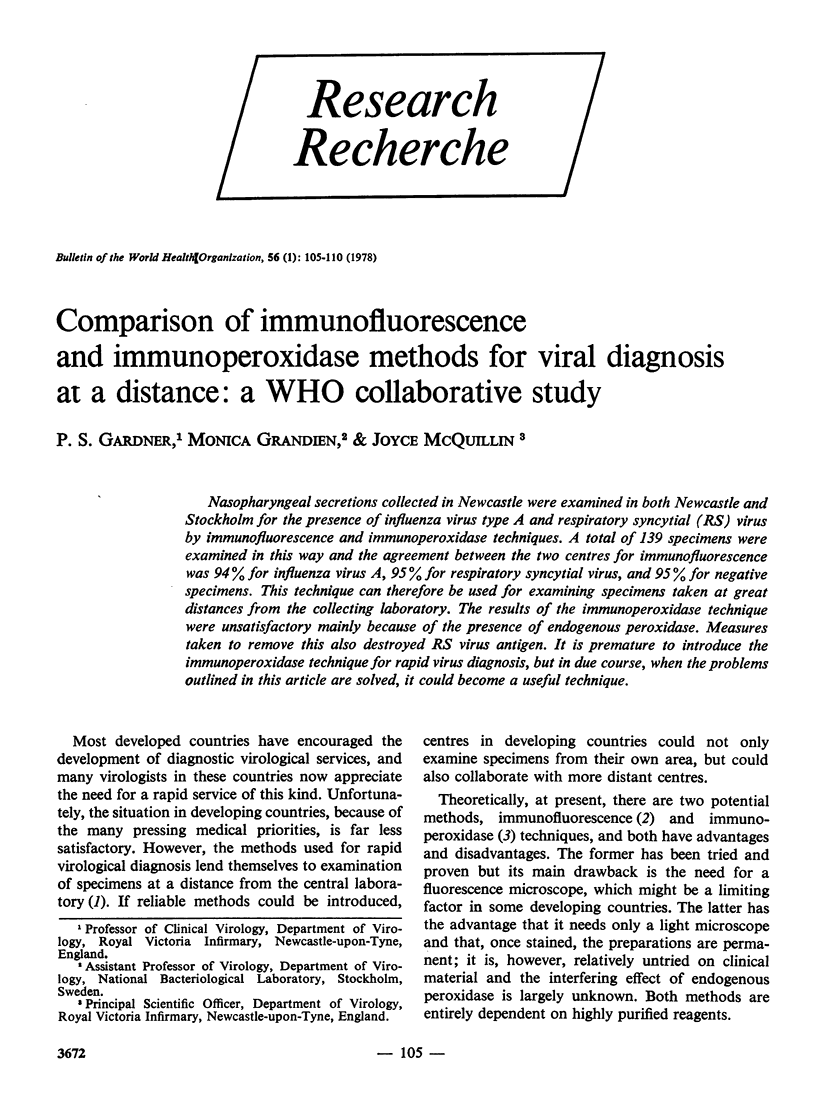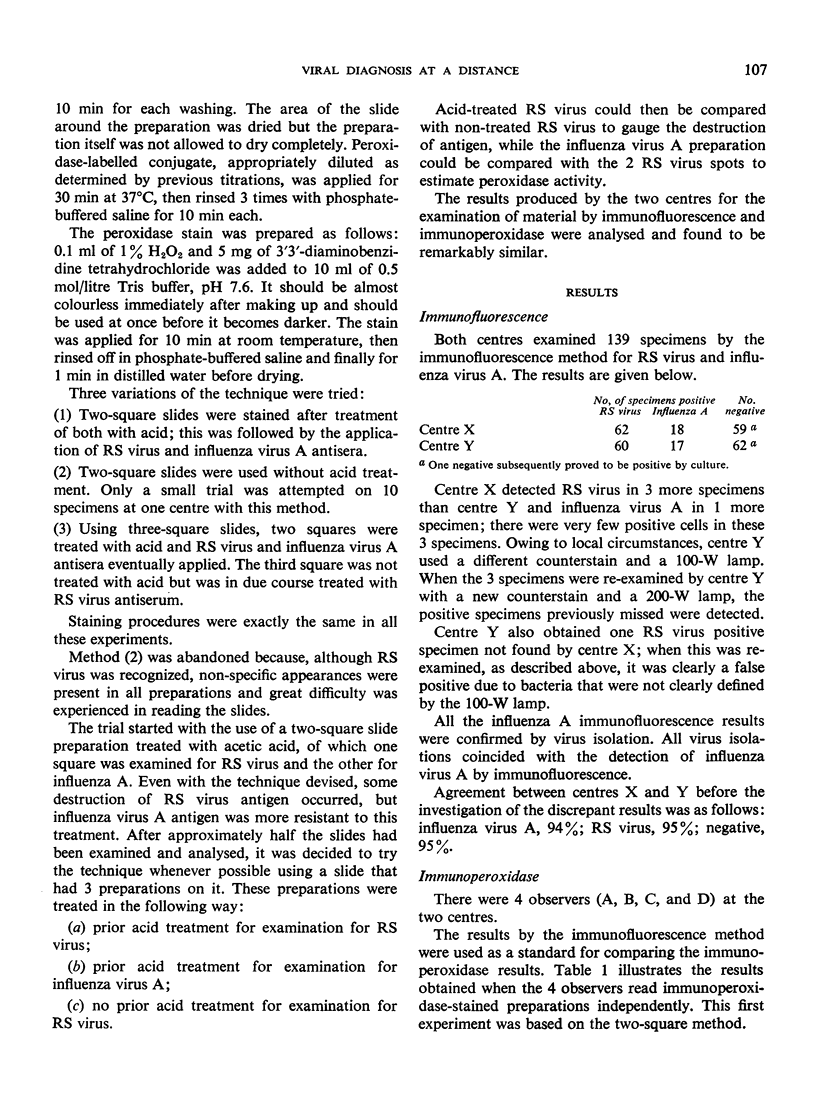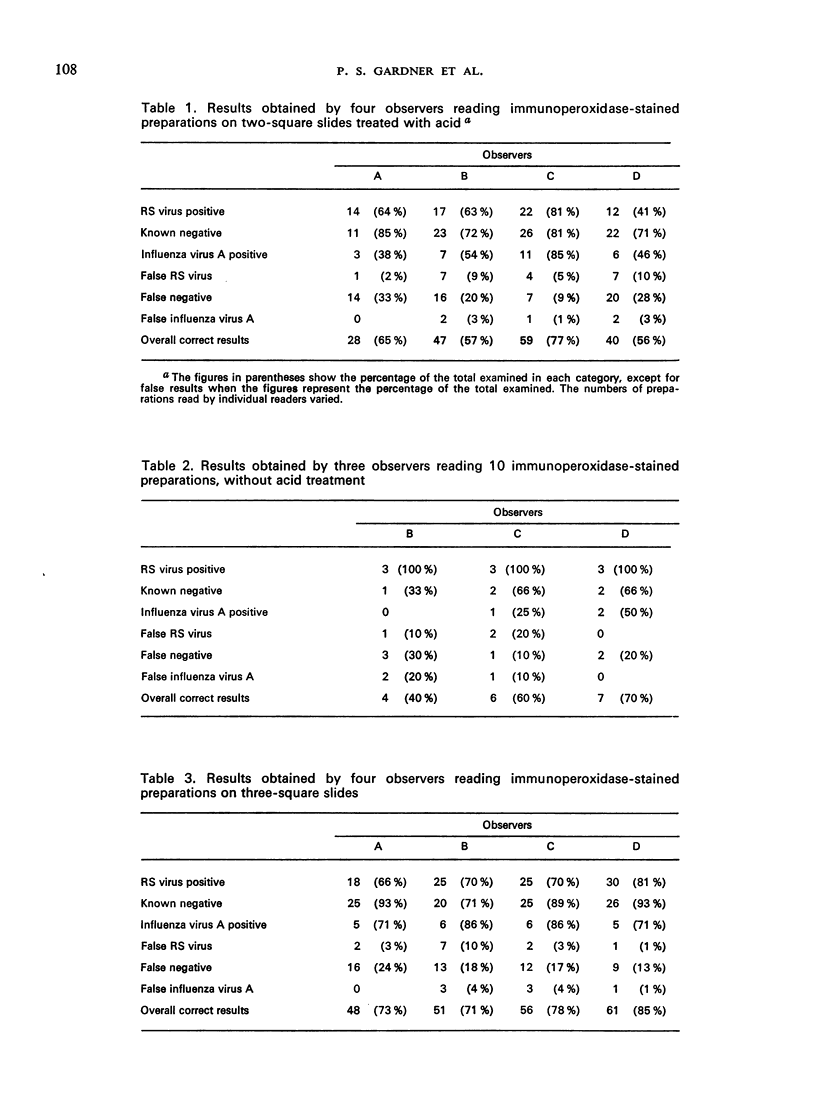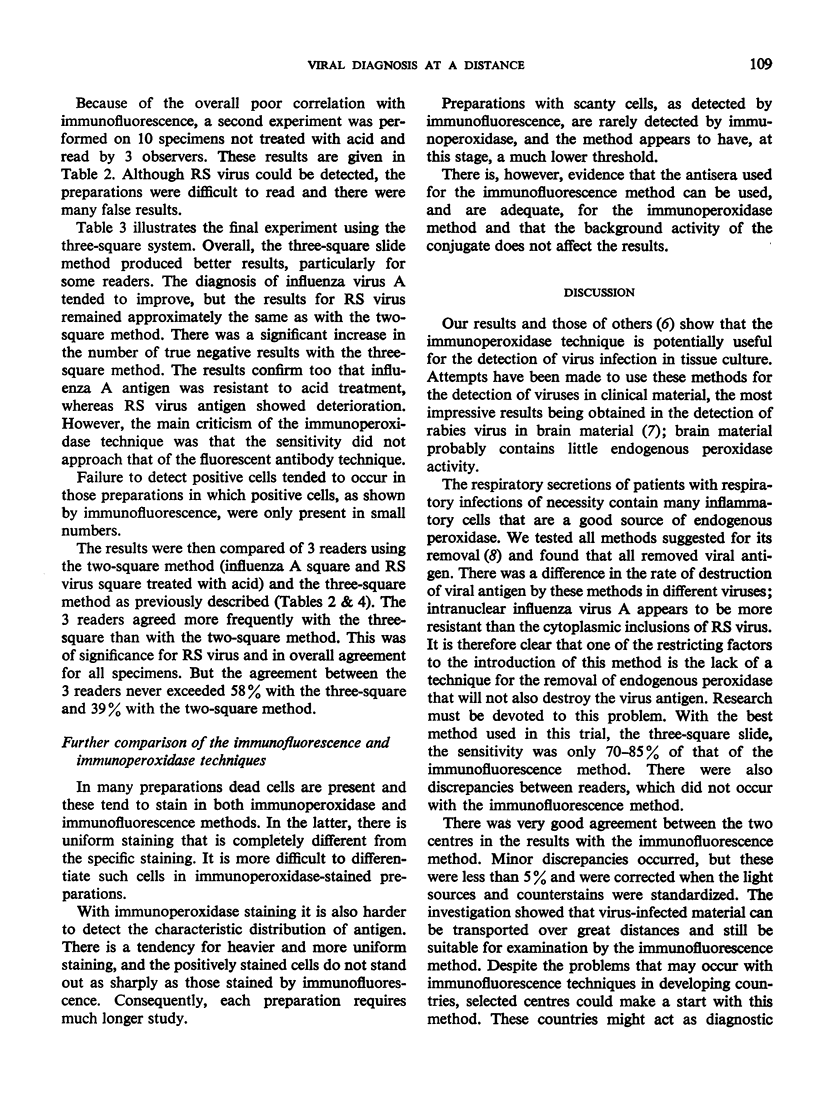Abstract
Nasopharyngeal secretions collected in Newcastle were examined in both Newcastle and Stockholm for the presence of influenza virus type A and respiratory syncytial (RS) virus by immunofluorescence and immunoperoxidase techniques. A total of 139 specimens were examined in this way and the agreement between the two centres for immunofluorescence was 94% for influenza virus A, 95% for respiratory syncytial virus, and 95% for negative specimens. This technique can therefore be used for examining specimens taken at great distances from the collecting laboratory. The results of the immunoperoxidase technique were unsatisfactory mainly because of the presence of endogenous peroxidase. Measures taken to remove this also destroyed RS virus antigen. It is premature to introduce the immunoperoxidase technique for rapid virus diagnosis, but in due course, when the problems outlined in this article are solved, it could become a useful technique.
Full text
PDF





Selected References
These references are in PubMed. This may not be the complete list of references from this article.
- Avrameas S., Ternynck T. Peroxidase labelled antibody and Fab conjugates with enhanced intracellular penetration. Immunochemistry. 1971 Dec;8(12):1175–1179. doi: 10.1016/0019-2791(71)90395-8. [DOI] [PubMed] [Google Scholar]
- Downham M. A., Elderkin F. M., Platt J. W., McQuillin J., Gardner P. S. Rapid virus diagnosis in paediatric units by postal service. Respiratory syncytial virus infection in Cumberland. Arch Dis Child. 1974 Jun;49(6):467–471. doi: 10.1136/adc.49.6.467. [DOI] [PMC free article] [PubMed] [Google Scholar]


